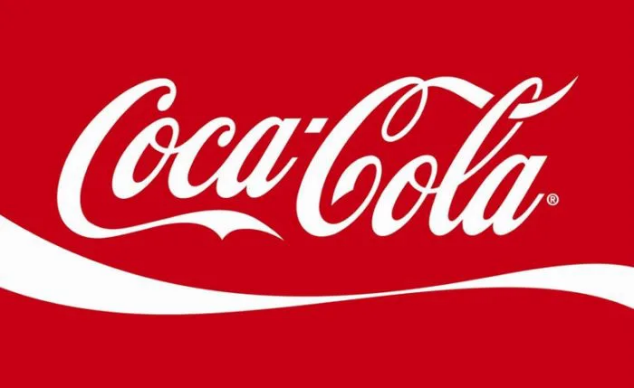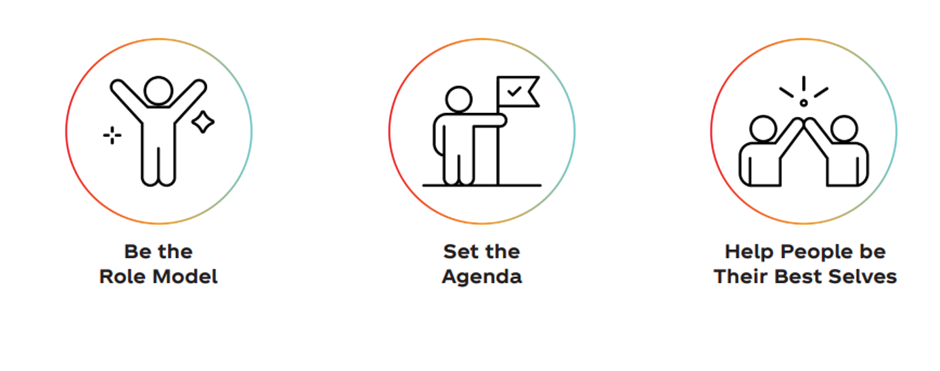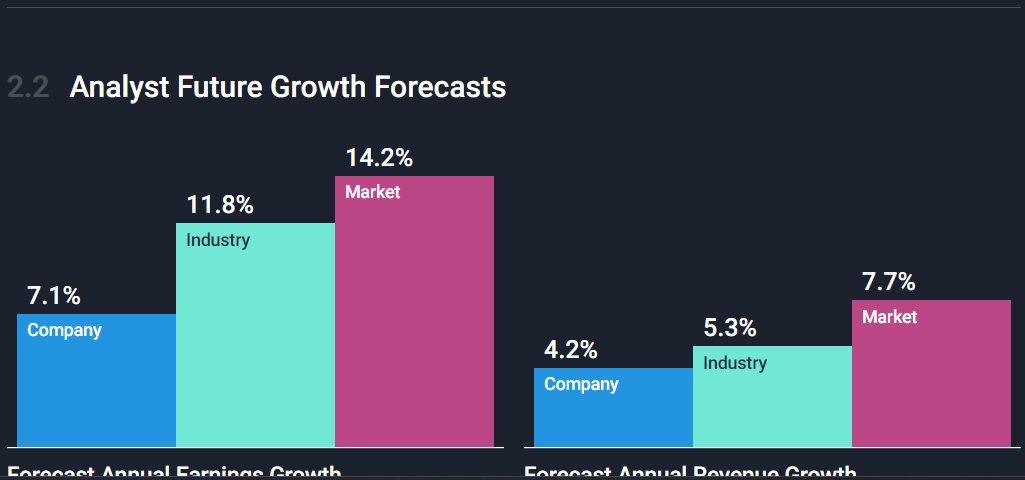Regulatory landscape and management of risk
Task 1
Organisational Culture and the Role of the Board

Figure1: Coca-Cola
1.1 Organisation culture
1.2 leadership style
Muhtar Kent, as chairman of the board of directors, now steers the company. James Quincey has been named CEO, while Brian Smith has been named president and chief operating officer. The responsibility for achieving the company's goals falls on the shoulders of the upper management.
1.3 Main duties
| Duty | Description |
|---|---|
| Fiduciary Duty | Act in the best interests of the company and its shareholders. |
| Strategic Planning | Set the long-term strategic direction of the company, including major business decisions (Gellatly et al., 2023). |
| Appointing and Evaluating Leadership | Appoint and evaluate the performance of the CEO and top executives. |
| Risk Management | Oversee risk management, including risk identification and mitigation. |
| Financial Oversight | Review and approve financial statements, budgets, and policies. |
| Compliance and Ethics | Ensure company compliance with laws, regulations, and ethical standards. |
| Shareholder Relations | Communicate with and be accountable to shareholders; address concerns and provide information. |
| Succession Planning | Plan and oversee executive succession; develop new leaders. |
| Responsibility | Description |
|---|---|
| Shareholders | Act in the best interests of shareholders; maximize value. |
| Stakeholders | Consider the interests of employees, customers, suppliers, and communities. |
| Regulators | Ensure company compliance with laws and regulations. |
| Market | Impact stock price and reputation indirectly through decisions. |
| Internal Stakeholders | Ensure a well-governed and ethical workplace. |
Sources: Self-developed
The board of directors is responsible for ensuring that the company's goals, finances, management, and adherence to legal and ethical requirements are all being met (Alaali et al., 2021). They are responsible for the company's entire performance and governance, and although they do what's best for shareholders, they have other obligations as well.
Task 2
Corporate Governance
2.1 Description
(Sources: Brondoni, 2019)
Committees: Multiple, specialised committees report to the board. The Audit Committee, the Nominating and Corporate Governance Committee, and the Compensation and Leadership Development Committee are just a few examples. The Board of Directors has assigned certain responsibilities to its committees, a. The findings and updates from these committees are presented in the Corporate Governance Report (Kolev et al., 2019). The biographical information pertaining to the Chairs of the Board committees, as well as the other members of the Board, including the Audit and Risk Committee, the Nomination Committee, the Remuneration Committee, and the Social Responsibility Committee, is shown below.
Executive remuneration and organisational leadership development are under the purview of the Remuneration and Leadership Development Committee, sometimes known as the Remuneration Committee. This committee's principal duty is to oversee executive pay, evaluate executive performance, and ensure that the company's compensation practises are consistent with its strategic goals (Nguyen, Yandi and Mahaputra, 2020).
2.2 Remuneration Committee's Role at Coca-Cola:
Task 3
Regulatory Landscape and Management of Risk
Risk management is an essential part of the board's role in corporate governance. It is the responsibility of the board of directors to monitor and control threats to the company's assets, good name, and continued viability (Antoniadis et al., 2019). This analysis considers the board's role in risk management and how it has changed over time:
3.1 Primary Responsibilities of the Board for Risk Management:
| Responsibility | Description |
|---|---|
| Setting Risk Appetite | Define the company's risk appetite and risk tolerance in alignment with strategic objectives (Ullah et al., 2021). |
| Risk Oversight | Actively oversee risk management practices, understand key risks, evaluate processes, and ensure effectiveness. |
| Risk Identification | Encourage directors to participate in risk identification and assessment, foster a risk-aware culture, and ensure prompt identification (Schoenherr et al., 2023). |
| Risk Mitigation and Control | Ensure that management implements adequate controls and mitigation strategies to address identified risks. |
| Risk Reporting and Communication | Require regular, comprehensive reporting on risk management activities, including the status of identified risks, effectiveness of mitigation measures, and emerging risks. |
| Compliance with Regulations | Ensure the company complies with relevant laws and regulations related to risk management to avoid legal and financial consequences. |
| Key Considerations for Effective Oversight and Risk Management | Description |
|---|---|
| Effective Oversight | Active board oversight is vital, involving proactive identification, assessment, and mitigation of risks to protect the company's interests. |
| Risk Culture | The board sets the tone for a risk-aware culture, promoting responsibility for risk management throughout the organization. |
| Independence | An independent board is crucial for robust risk management, as it is more likely to challenge management's decisions and assumptions related to risk. |
| Expertise | Diverse director expertise and experience enhance the board's ability to assess and manage a wide range of risks effectively. |
| Transparency | Transparent risk reporting is critical to ensure that all stakeholders, including shareholders, are aware of the company's risk profile and management efforts. |
| Alignment with Strategy | The board ensures risk management aligns with the company's strategic objectives, evaluating risks in the context of the company's goals and plans. |
| Communication | Effective communication between the board and management is essential to encourage open and honest dialogue about risks and challenges. |
| Scenario Planning | The board engages in scenario planning to consider potential risks and their impacts, particularly in rapidly changing environments. |
Sources: Self-developed
3.3 Regulatory Landscape for Coca-Cola
The organisation is dedicated to adhering to all relevant legal regulations on a global scale, including the United States, where our activities may be subject to examination by authorities responsible for competition law enforcement. In the United States, the items manufactured within our jurisdiction are subjected to a range of legal statutes and regulations, which include the Federal Food, Drug, and Cosmetic Act, the Federal Trade Commission Act, and the Lanham Act (Olaniyi, Olabanji and Abalaka, 2023). In international jurisdictions, our company is subject to comparable legislation and regulations. Proposition 65, a legislation in California, requires the implementation of warning labels on items that pose a risk to consumers by exposing them to compounds known to cause cancer or have detrimental effects on human reproduction or development.
Coca-Cola is lagging behind rivals in every market except sparkling water. The focus will be placed on expanding into new types of beverages via innovative research and development. The adage "the bigger, the better" is not necessarily true. The Coca-Cola Company is starting to worry that it has too many different brands to effectively market. The company's objective is to reorganise its product lineup and reduce the number of its master brands. They have already reduced the original estimate of 400 to only 200 (Musungwa and Kowe, 2022). They may concentrate more effectively on a smaller number of master brands.
Environmental Regulations: Coca-Cola must comply with environmental laws that govern its use of water, disposal of trash, and release of greenhouse gases. The extensive manufacturing and distribution network of the corporation has a major effect on the natural world. Failure to meet environmental regulations may result in financial penalties and negative public opinion (Huse et al., 2022).
| Social Media Platform | Account Name | Start Date | Subscribers/Followers | Content and Purpose | Website Traffic Share |
|---|---|---|---|---|---|
| YouTube | The Coca-Cola Company | 2006 | 3.6 million subscribers | Promotional videos and advertisements from around the world | Approximately 8% |
| Coca-Cola | - | 6 million followers | Company updates, job openings, talent acquisition | Not specified | |
| @CocaCola | 2009 | 3.3 million followers | Short inspirational and engaging messages | Approximately 62% | |
| Coca-Cola | - | 2.8 million followers | Promotional stories | Not specified | |
| Coca-Cola | - | 30,000 followers | Drink and food recipes, product promotion | Over 10 million views/month | |
| Coca-Cola | - | 105 million followers | Videos, promotional content in multiple languages | Not specified |
3.4 Evaluation of the Impact of Regulators on Coca-Cola's Success
Maintaining continuous operations necessitates adhering to applicable rules. The company's financial health and image are vulnerable to regulatory penalties, legal fights, and product recalls. Coca-Cola, like other significant firms, must manage its reputation in order to preserve the value of its brand. Trust among consumers and investors may be harmed when regulators use their authority to reveal violations and impose fines (Soomro, Khan and Arafa, 2021).
3.5 Risk Management
| Main risk | Description | Potential impacts | Key mitigation actions |
|---|---|---|---|
| Strategic shareholder relationships | The stability of their company is dependent on their partnership with The Coca-Cola Company and FEMSA. | They have taken measures that are detrimental to their shareholders (everyone else than The Coca-Cola Company and FEMS). |
The agreements with their bottlers must be followed. |
| Coca-Cola trademarks | Coca-Cola's bottom line might take a hit if their brand's integrity is compromised. | Brand reputation for Coca-Cola to suffer | |
| Regulations | Their bottom line may take a hit if taxes and laws in the places they do business were to ever change. | There has been an increase in operating and compliance costs. Restrictions are imposed on their operations. |
Part B
Task 1 -Leadership and Management (18 marks, LO1, LO2)1100
1.1 Leadership style

Figure 5: Leadership
Focusing on the Customer:
Coca-Cola is renowned for its dedication to its customers. Company leaders are urged to have a thorough familiarity with their customers, to be on the lookout for emerging requirements and wants, and to use this information to shape the company's goods and marketing initiatives (Singaram et al., 2019).
Teamwork and Mutual Assistance:
Coca-Cola places a premium on cooperation, and managers are tasked with forming and leading multi-departmental groups that share a same vision. Taking this course of action promotes teamwork and camaraderie.
1.2 Management style
Planning:
Coca-Cola's strategy and tactical planning approach is aimed at helping the company achieve its vision of being the biggest and best anchor bottler in the world. Top management creates both long-term plans for the next five years and annual plans to keep the approach fluid and responsive. Sales team input is used in conjunction with input from middle management to inform strategic planning. All workers are given goals to work towards, and their progress is monitored and evaluated on a regular basis (Gómez, 2019). Increasing middle management's share in different markets by 5-30% is a primary goal of strategic planning at the macro level. Salespeople are tasked with coordinating with suppliers, bottlers, and distributors to achieve operational objectives.
The General Manager, who answers to the country head, sits atop the regional hierarchy and exercises micro-level situational behavioural leadership. When it comes to sales, the corporation uses an incentive-based structure to get the most out of its staff. Increases in base salary, bonuses, and commissions based on sales performance are examples of monetary incentives, whereas gift certificates for travel and reduced holiday packages are examples of non-monetary incentives. Through this system, Coca-Cola is able to efficiently run its business on a global and regional scale.
Controlling
1.3 Coca-Cola and PepsiCo Leadership Style
| Aspect | Coca-Cola | PepsiCo |
|---|---|---|
| Organizational Structure | Hierarchical structure with centralization. | Decentralized approach, encouraging local adaptation. |
| Long-Term Vision | Commitment to long-term sustainability and responsible corporate citizenship. | Emphasis on "Performance with Purpose" combining business performance with sustainability and social responsibility. |
| Brand Strategy | Strong emphasis on maintaining and promoting its iconic brand. | Diversification into the snacks and food industry in addition to beverages. |
1.4 Issues and Implications for Future Development:
PepsiCo has been able to diversify its business and identify new development prospects outside of the beverage market by expanding into the snack and food industries. Coca-Cola's potential for diversification is constrained by the company's exclusive concentration on drinks, both organisations are devoted to environmental stewardship and helping the community as a whole. Consumers and stakeholders who place more emphasis on a company's dedication to social and environmental concerns may respond more positively to PepsiCo's "Performance with Purpose" strategy (Marcoux, 2022).
Competition in the industry is fierce, with both Coca-Cola and PepsiCo constantly testing new products and strategies to gain ground. The competition will be shaped by the leaders' unique management philosophies and strategic perspectives.
1.5 Business challenges in the future
Coca-Cola faces stiff competition from not just its long-time competitor PepsiCo but also a broad spectrum of developing and niche brands in the highly competitive beverage sector. Maintaining a competitive edge is an ongoing uphill battle (Akingbade, 2020). Coca-Cola may have difficulties in running its business and making money as a result of increased government restrictions on matters such as labelling, health standards, and environmental practices.
Although diversity may be a source of strength, it can also provide managerial difficulties. It might be difficult to manage a wide variety of brands while still giving attention to essential items. Coca-Cola's expansion may be hampered by the fact that it has saturated many local markets throughout the globe. Difficulties in Supply and Distribution Managing a worldwide supply chain and distribution network is difficult, particularly when dealing with unexpected events like natural catastrophes or political unrest.
Sources: Self -Developed

Task 2 – Leadership for Performance (18 marks,LO1, LO2, LO3)1100
used to help achieve the objectives identified above
o Provide a critical evaluation of key financial statements within recent 2022 quarterly results
Task 3 - Ethical Leadership
3.1 Ethical issues
3.2 Recommendations for managing Ethical issue:
| Recommendation | Description |
|---|---|
| Sustainable Sourcing | Commit to sourcing ingredients and materials sustainably, with a focus on water usage and carbon footprint. Support responsible agriculture and water management in sourcing regions. |
| Reducing Plastic Usage | Implement measures to significantly reduce the use of single-use plastics in packaging. Transition to eco-friendly materials, promote recycling, and support bottle return programs. |
| Waste Reduction | Develop initiatives to reduce waste generation in production and distribution. Optimize supply chain operations to minimize environmental impact. |
| Energy Efficiency and Renewable Energy | Invest in energy-efficient technologies and transition to renewable energy sources to reduce greenhouse gas emissions in manufacturing and transportation. |
| Transparency and Reporting | Publish annual sustainability reports to detail progress in reducing environmental impacts, fostering trust with consumers and stakeholders. |
| Corporate Responsibility and Community Engagement | Engage with local communities to address environmental concerns, particularly related to water use. Collaborate with environmental organizations and local authorities to support conservation and responsible water management projects. |
| Advocate for Industry-Wide Changes | Actively support and advocate for industry-wide changes, including regulations addressing plastic pollution and promoting sustainable practices within the beverage industry. |
| Product Innovation | Invest in R&D to create sustainable, eco-friendly packaging options and explore alternative beverage delivery methods to reduce environmental impact. |
| Continuous Improvement | Implement a continuous improvement process to assess and address environmental impacts throughout the product life cycle, from sourcing materials to disposal of packaging. |
| Stakeholder Engagement | Engage with stakeholders, including environmental organizations, government agencies, and concerned communities, to address environmental concerns and work collaboratively on solutions. |
Ethical concerns about Coca-Cola's environmental effect may be allayed by the company's demonstrated dedication to environmental sustainability and responsible corporate responsibility. This method is in line with the larger social and environmental duties of multinational businesses.
References
Akingbade, O.E., 2020. Digital media marketing and the consumption of sugar-sweetened beverages in Africa: a reception analysis of the multi-channel marketing of Coca-Cola among young Africans from the University of Lagos, Nigeria and Rhodes University, South Africa (Doctoral dissertation, PhD thesis, Rhodes University). https://commons.ru.ac.za/vital/access/services/Download/vital:41012/SOURCE1
Chiu, H., Fischer, D. and Friedman, H., 2019. Board Diversity in Audit and Finance Committees: A Case Study of Coca-Cola. In Diversity within Diversity Management: Types of Diversity in Organizations (pp. 95-113). Emerald Publishing Limited. https://www.researchgate.net/profile/Holly-Chiu/publication/332595550_Board_Diversity_in_Audit_and_Finance_Committees_A_Case_Study_of_Coca-Cola/links/5cdc113a299bf14d9598e152/Board-Diversity-in-Audit-and-Finance-Committees-A-Case-Study-of-Coca-Cola.pdf
Chu, B., 2020, November. Analysis on the Success of Coca-Cola Marketing Strategy. In 2020 2nd International Conference on Economic Management and Cultural Industry (ICEMCI 2020) (pp. 96-100). Atlantis Press. https://www.atlantis-press.com/article/125947132.pdf
Gellatly, S., Moszczynski, A., Fiedeldey, L., Houle, S., Smith, M., Ogbogu, U., Rudman, D., Minaker, L. and Shelley, J., 2023. “No one went into pharmacy… to sell a lot of Coca-Cola. It's just sort of a necessary evil”–Community pharmacists' perceptions of front-of-store sales and ethical tensions in the retail environment. Exploratory Research in Clinical and Social Pharmacy, 11, p.100312. https://www.sciencedirect.com/science/article/pii/S2667276623000938
Gómez, E.J., 2019. Coca-Cola’s political and policy influence in Mexico: understanding the role of institutions, interests and divided society. Health Policy and Planning, 34(7), pp.520-528. https://academic.oup.com/heapol/article-pdf/34/7/520/30132928/czz063.pdf
Kolev, K.D., Wangrow, D.B., Barker III, V.L. and Schepker, D.J., 2019. Board committees in corporate governance: A cross‐disciplinary review and agenda for the future. Journal of Management Studies, 56(6), pp.1138-1193. https://epublications.marquette.edu/cgi/viewcontent.cgi?article=1367&context=mgmt_fac
Liu, S., 2021. A Report on Strategic Analysis and Recommendations of Coca-Cola. International Journal of Frontiers in Sociology, 3(17). https://francis-press.com/uploads/papers/HF00A1bIeKjadcyjye9861hTJNwsalKQGAA7snui.pdf
Nguyen, T.T.T., Nguyen, T.S., Doan, H.C., Nguyen, T.P.T., Luong, T.A. and Luu, K.C., 2023. Relationship Between Social Responsibility And Sustainable Development In Vietnamese Seafood Enterprises. Journal of Survey in Fisheries Sciences, pp.394-403. https://www.sifisheriessciences.com/index.php/journal/article/download/1081/513
Olaniyi, O., Olabanji, S.O. and Abalaka, A., 2023. Navigating risk in the modern business landscape: Strategies and insights for enterprise risk management implementation. Journal of Scientific Research and Reports, 29(9), pp.103-109. https://www.researchgate.net/profile/Oluwaseun-Olaniyi/publication/374022466_Navigating_Risk_in_the_Modern_Business_Landscape_Strategies_and_Insights_for_Enterprise_Risk_Management_Implementation/links/6509a822c05e6d1b1c1d111e/Navigating-Risk-in-the-Modern-Business-Landscape-Strategies-and-Insights-for-Enterprise-Risk-Management-Implementation.pdf
Singaram, R., Ramasubramani, A., Mehta, A. and Arora, P., 2019. Coca Cola: A study on the marketing strategies for millenniums focusing on India. International Journal of Advanced Research and Development, 4(1), pp.62-68. https://www.multidisciplinaryjournal.net/assets/archives/2019/vol4issue1/4-1-25-458.pdf
Soomro, N.E., Khan, A. and Arafa, A., 2021. Anti-monopoly law of China: A case study of coca cola’s proposed merger with huiyuan. International Journal of Business and Economics Research, 10(1), pp.34-39. https://www.zbw.eu/econis-archiv/bitstream/11159/474326/1/EBP078349249_0.pdf
Zhao, S., 2022, March. Managing Intangible Resources. In 2022 7th International Conference on Financial Innovation and Economic Development (ICFIED 2022) (pp. 1497-1503). Atlantis Press. https://www.atlantis-press.com/article/125971521.pdf





